A History of North American Death Metal in 30 Albums
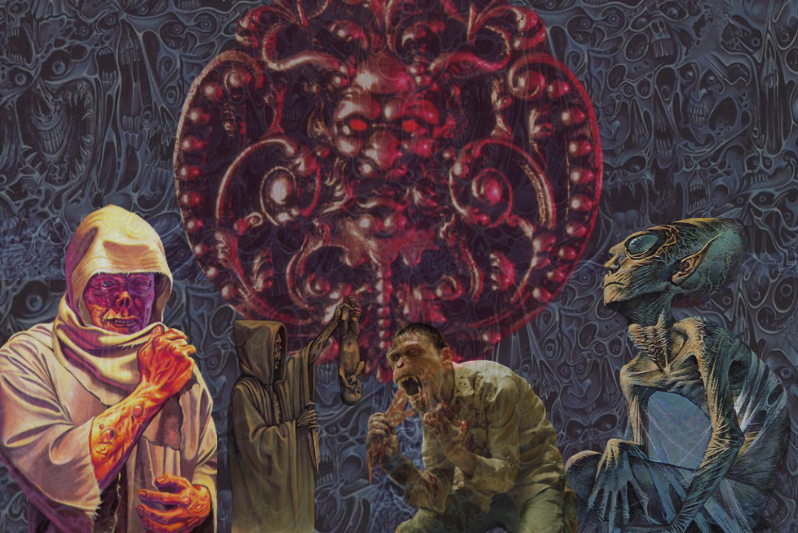
In hindsight, it makes perfect sense that the U.S. would be the point of origin for one of the most brutal forms of heavy metal.
The United States has a handful of unique art forms it can call its own—jazz and the serial superhero comic, to name a few that have held up well over the years. But in the 1980s in near-opposite corners of the country, a wholly American art form had begun to bubble up from fetid swamps, recognizing and reflecting the ugliness inherent in American society rather than upholding our ideals. In the Bay Area, Possessed had taken the immediacy of thrash and made it more brutal, more dissonant, while in Florida, Death (formerly known as Mantas) had merged the aesthetics of horror with a more technical and intense metal hybrid that revealed new extremes in heavy metal. And with the incubation of these parallel inspirations, a new American art form was born: Death metal.
As death metal evolved and made its way around the globe, other localities began to develop their own unique takes on the sound, be it the streamlined, buzzsaw guitars of Swedish death metal, or the Napalm Death-influenced violence of UK death. There’s a form of death metal in every country, in every scene, and it’s as strong as its ever been, in large part because it keeps evolving. A surface level survey might not reveal it as such, but death metal is one of the most versatile forms of heavy music, and thanks in large part to a new renaissance of young American bands, its future looks very promising.
As death metal’s first proper album turns 35 this year, we’re taking a look back at the history of death metal in North America, from the Bay Area to Tampa Bay, and from Montreal to Mexico City. While we can’t claim to cover every last important band in the development of this ever-evolving form of metal, we trace the path from its earliest guttural bellows to its prog odysseys to UFOs, and various stops in between—deathgrind, prog death, brutal death, even deathcore—through 30 of its most essential albums.

Possessed – Seven Churches (1985)
It’s easy to forget that Primus’ Larry Lalonde played with death metal pioneers Possessed, as atmosphere and groove are not what fueled the Bay Area Band. The band’s debut—frequently cited as death metal’s first proper LP—is propelled by a wrathful snarl and thrashing fast riffs with the kind of sinister sonic intent that gives credence to this band’s influence on metal bands yet to come. Jeff Becerra’s vocals are less growled than those of Morbid Angel’s David Vincent, and spit out in a manner that suggests they listened to The Exploited as often as they did Venom. The dark, dense sound this album invoked in the mid-’80s was years ahead of its time. – Wil Lewellyn
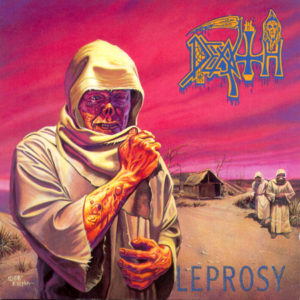
Death – Leprosy (1988)
It is impossible to overstate Death’s importance. In truth, any one of their records could have a place on this list, given that every one of their studio records had genre-shaping consequences. What makes Leprosy our pick has more to do with its keen balance of simple brutality and hi-tech prog-gesturing arrangements than any fault of other records. The career of Death can be mapped as a single arc spanning the simple to the deeply proggy. Leprosy, being their second, still keeps two fistfuls of brutality, leaving prog as a spice on the rack. The result is a record that many consider not just the best the band would produce but the best of death metal period. Whether that’s hyperbolic is up to the beholder; what isn’t is the monumental impact this had on the then-young genre, one that can still be felt in every modern OSDM band going. – Langdon Hickman
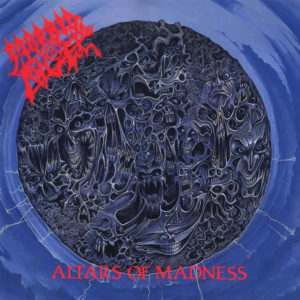
Morbid Angel – Altars of Madness (1989)
Death metal as it exists now would not be what it is without Altars of Madness. The debut album from Florida’s Morbid Angel has been heralded as one of the most pivotal records in death metal’s origin story. Guitarist Trey Azagthoth and company took much of the thrash metal skeleton and some psychedelic rock influences and injected it with a heavy dose of occult mysticism and aggressive technicality. Tracks like “Chapel of Ghouls” and “Maze of Torment” exemplify the
talent and vision of these death metal pioneers. Azagthoth is a riff god and drummer Pete Sandoval is regarded as the father of the blast beat. David Vincent employed a similar vocal approach to Chuck Schuldiner and early English grindcore bands. The resultant experiment gave rise to fiery solos, furious blasts, and guttural vocals that still hold up over 30 years later.- Cody Davis

Obituary – Slowly We Rot (1989)
The debut album by Florida death metal icons Obituary was the band’s only release to be played in standard tuning, which had the effect of giving the guitars more of a thrash metal sound. More importantly, it was one of the first albums to cement Scott Burns as the defining death metal producer of the Tampa death metal sound, his credit appearing on albums by Death and Deicide, as well as a long list of albums by bands outside of the Sunshine State. John Tardy’s unique voice set Obituary apart from other death metal bands, as he vomited up the lyrics with a great deal of passion. His phrasing might have owed a bit to Tom G. Warrior of Celtic Frost, but the inhuman manner in which these grim stories are spewed forth is unmatched. – Wil Lewellyn
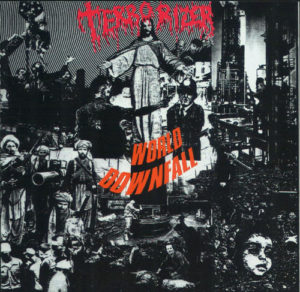
Terrorizer – World Downfall (1989)
Death metal and grindcore emerged from the same era but went in different directions, the latter a much faster and more chaotic permutation of extreme metal’s outgrowth. The ethos of aestheticized violence is something they both share in common, so it’s only natural that the two would intersect. Los Angeles’ Terrorizer might not have been the first to do it, but they arguably delivered its first essential LP, their titanic debut World Downfall. A similarly noxious tornado of sound as Napalm Death’s Scum, but one that seems to have swept up a toolshed full of machetes during its campaign of mayhem, World Downfall is simultaneously intense, unpredictable and razor sharp, with moments like the title track and “Corporation Pull-In” delivering satisfying riff chugs amid the toxic dust clouds. Death metal’s always been about unparalleled feats of human endurance and ability, but World Downfall was one of the first to pull it off in record time. – Jeff Terich

Deicide – Deicide (1990)
The most striking thing about Deicide’s debut album upon its 1990 release was the sheer anti-Christian venom that was infused into these songs, no doubt upsetting a few religious groups and parents in the process. Listening back now, it’s clear that the escapism of horror movies also provided a heavy dose of inspiration, but at the time Glen Benton seemed pretty sincere in his Satanic messaging. The double tracked vocals that define the band’s sound gave a more demonic delivery, which certainly helped. But the great thing about Deicide isn’t just the shock value but the band’s overall focus, delivering a top-notch set of songs instead of merely a sound. – Wil Lewellyn
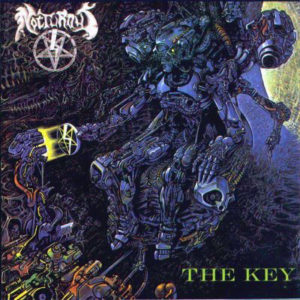
Nocturnus – The Key (1990)
A New Age keyboard-laden sci-fi concept album a time-travelling Satan-worshipping machine emerging at the birth of Christ to nuke him in his manger, The Key is anything but typical. Especially for the time; extreme metal might now be comfortable with keyboards, but at the release of Nocturnus’ debut, you’d have been better off with hairspray and lipstick than a synthesizer. It turns out that hybridizing King Diamond-style progressive metal with Morbid Angel and The Terminator is a winning combination, however. This style of virtuosic progressive metal playing was the style du jour in the thrash and traditional heavy metal but for death metal, it was a shocking rarity, all performed with a frantic, animalistic force of will. It’s a boldness that’s still refreshing 30 years later, managing to be both more primitive and more technical than almost anything else you might stack up against it. God bless Satanic time-travelling nuclear cyborgs. – Langdon Hickman

Nuclear Death – Bride of Insect (1990)
Sharing the same initials and penchant for total sonic destruction as their peers across the Atlantic, Phoenix’s Nuclear Death delivered a particularly manic and disorienting take on deathgrind with second album Bride of Insect. Guided by the ghoulish growls of Lori Bravo, Nuclear Death kicked up the kind of noise storm that was perhaps precision-crafted but often sounded to the listener like an impenetrable wall of sound. Tracks like “Stygian Tranquility” and “Place of Skulls” are far more dense and harrowing than any black metal band would produce a half-decade later, the consistency of their guitar tone something like toxic molasses. There’s a charmingly lo-fi sensibility to Bride of Insect, right down to the ballpoint pen cover art, but it’s hard to imagine a more pristine death metal production being able to melt faces like this could. – Jeff Terich

Atheist – Unquestionable Presence (1991)
Once a style of metal is born, it only takes a year or two before some virtuoso showboats manage to make it “technical.” But well before we started to define genres by absurd onomatopoeic guitar sounds, Atheist emerged with a sublime cross-section of intricate musicianship, melodic songwriting and a proper dose of shithouse death metal demolition. Amid the nimble spiral-staircase bass work, time-signature shifts and serpentine riffs on Sarasota quartet Atheist’s sophomore album Unquestionable Presence, there are glorious hooks and grooves galore—more Rush in their ’80s prime than a Soft Machine jam session. But all it takes is the stuttering chug of a track like “Enthralled in Essence,” complete with its soaring high-on-the-neck leads, to remind the listener that the shred serves the song above all. Unquestionable Presence is death metal that’s tuned up and optimized for maximum performance. – Jeff Terich
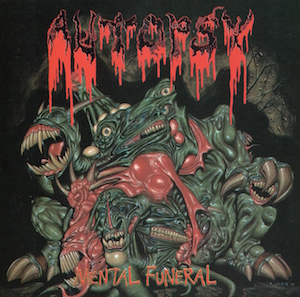
Autopsy – Mental Funeral (1991)
Early death metal found a perfect blend of musicality and macabre with Autopsy’s second full-length record, Mental Funeral. Album highlights like “In the Grip of Winter” and “Robbing the Grave” show off Autopsy’s penchant for doom-laced death metal. Meanwhile, moments like “Torn from the Womb” and “Destined to Fester” showcase the gruesome and gory nature of the band’s subject matter that has become a cornerstone for many corners of death metal as a whole.- Cody Davis
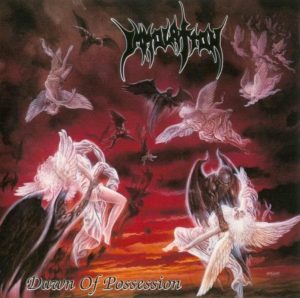
Immolation – Dawn of Possession (1991)
Yonkers, New York’s Immolation have spent much of their career perfecting the nastiest and most suffocating tone possible while mostly adhering to a vintage ideal of death metal. Their debut album Dawn of Possession is cut from a similar cloth as Morbid Angel’s Altars of Madness, but it’s that much harsher in its atmosphere, that much more twisted in how it brings about a collision between slo-mo toxic ooze and an amphetamine gallop. In other words, it’s got the riffs, and they’re wretchedly satisfying. – Jeff Terich

Cynic – Focus (1993)
If Tampa was the incubation ground for the classic sound of North American death metal as we know it, Miami provided the birthplace for death metal at its most progressive and experimental. It takes less than two minutes for “Veil of Maya,” the opening track on Cynic’s debut album Focus, to abandon metal entirely and start up a jazz-fusion jam. The technical wizardry, robot vocals and lack of any kind of genre loyalty probably caught a few heshers off guard when Focus first dropped, but after 27 years there’s no question about the breadth of its influence, from heroic progsters like Opeth to tech weirdos Artificial Brain and everything in between (like, say, Blood Incantation). And yet, even after all this time, few bands have attempted anything quite so bonkers in its breadth and intricate stitching together of sounds, textures, styles and genres. Perhaps unsurprisingly, it would be another 15 years before Cynic would return with a record worthy of following this jaw-droppingly weird slice of jazz-death. – Jeff Terich
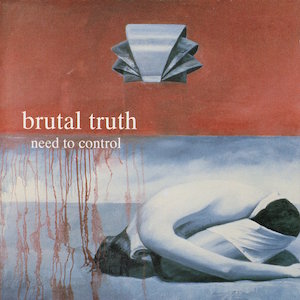
Brutal Truth – Need to Control (1994)
The slow lurch of “Collapse,” the opening track of Brutal Truth’s Need to Control, offers the false suggestion that the New York bruisers’ second album isn’t the manic sprint that its predecessor was. That, of course, isn’t the case, and once “Black Door Mine” takes off, there’s no outpacing the band’s adrenaline-fueled race to oblivion. What set Need to Control both apart from Brutal Truth’s death metal and grindcore contemporaries alike is their versatility, the band’s ability to transition between moments of torture-chamber churn and machine-gun blast hardcore alike. Each shift comes with its share of unexpected thrills, whether in the form of Eyehategod’s Mike IX Williams lending guest shouts to a cover of The Germs’ “Media Blitz,” the use of didgeridoo on the noise-rock standout “Godplayer,” or the sheer dissonance and hostility of “Displacement.” Whatever further extremes Brutal Truth would pursue—and they most certainly were extreme—on Need to Control they found a balance between death metal’s lumbering menace and grindcore’s cacophonous slaughter that few have managed to pull off so well. – Jeff Terich

Cannibal Corpse – The Bleeding (1994)
The lyrics may not have aged especially well, even for the typically gruesome world of death metal, but oh man, those riffs. We can make arguments all day long about who is the most influential death metal band of all time, but the simply most death metal is indisputably Cannibal Corpse, and The Bleeding is the first time that argument was made convincingly on tape. Make no mistake; they were an incredible band before this, but on The Bleeding, the stars seemed to align into a perfect pentagram, letting the quintet perfect channel the infernal macabre will of hell in a set of riffs that live perfectly between the gross and vicious and the subtly virtuosic. Many albums in this genre are great, but The Bleeding is the very center of the genre, the quintessential defining document. There is none more death metal than this. – Langdon Hickman

Suffocation – Pierced from Within (1995)
Pierced from Within still sounds as punishing as ever. With his gloriously down-tuned, gritty yet intricate guitar work, Terrance Hobbs was instrumental in ushering in a new kind of death metal as indebted to grindcore as it was to thrash. On albums like their debut, 1991’s Effigy of the Forgotten, and 1995’s Pierced from Within, arguably their greatest achievement, Suffocation proved with certainty that you can, and perhaps should, be heart-crushingly brutal and mind-expandingly technical at the same time. Listening to Pierced from Within now, 25 years after its initial release, its unrelenting heaviness still sounds current. The influence of Hobbs’ virtuosic intensity and Frank Mullen’s guttural growl can still be heard in death metal’s contemporary vanguard—from Blood Incantation to Thætas. Between the crushing low-end and the breakneck pace, the weight and the restlessness, it’s difficult to take Suffocation for granted, even decades later. Pierced from Within is one of those albums that, in addition to being massively influential, has aged remarkably well. – Tyler Dunston

Cryptopsy – None So Vile (1996)
Canada’s Cryptopsy had been on an upward slope prior, but with None So Vile, they were quickly declared legends. The songs here are eyeball-wateringly, balls-crushingly complex, technical to the extreme, all without losing an ounce of brutality. There was an arms race in death metal by this point in its history, where extremity was measured not just by mere heaviness or technicality but the extremist hybridization of the two. None So Vile feels as brain-melting now as it did the day it came out largely because of the shocking impression it had on death metal drumming; nearly every record of the genre can trace its drum approach to the moment Flo Mournier broke the world’s brains on this album, like a cocaine-addled Satan worshiping Neil Peart. That the riffs and especially the lyrics are stellar to boot is just icing on the cake. – Langdon Hickman
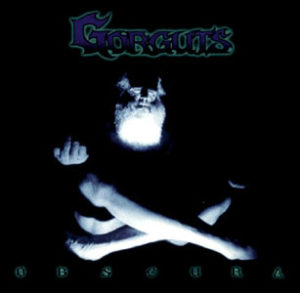
Gorguts – Obscura (1998)
If all of heavy music were John Coltrane’s discography, Gorguts’ 1998 opus Obscura would probably be among Coltrane’s most difficult and transcendent free jazz. (Have you heard Interstellar Space lately? That stuff is metal.) On a musical level, there’s Obscura’s disorienting use of dissonance, syncopation, and atonality, but on a conceptual level, there is also a fearless and fevered searching shared by both albums. Gorguts vocalist and founder Luc Lemay attributes much of this to the contributions of guitarist Steeve Hurdle on this record: “Guitar-wise he always wanted to push the limits further… He would always look for new sounds and textures.” Gorguts hadn’t set out to entertain on Obscura—at least, that wasn’t the primary goal, though the record is nevertheless captivating. Similarly, Coltrane had long since moved beyond the masterful yet more accessible grooves of Giant Steps and Blue Train. Gorguts, likewise, were after something higher, more challenging. That ambition is a big part of what’s made Obscura such an important record, influencing bands ranging from Ulcerate to, of course, Obscura, who took their name from Gorguts’ record. The album is a lodestar to any band seeking to push the boundaries of technical death metal, and, for that matter, music in general. – Tyler Dunston
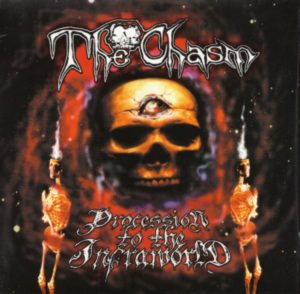
The Chasm – Procession to the Infraworld (2000)
Mexico City’s The Chasm channel the interplanetary and the supernatural in the service of epic death metal with a glorious, melodic prog streak. The band’s fourth album, Procession to the Infraworld, is less brutality-for-brutality’s-sake gnarl, more soaring majesty with occasional bouts of guttural growl. A six-minute journey like “At the Edge of the Nebula Mortis” feels almost like four songs in one, balancing atmospheric mysticism, gut-punch riffs, prog technicality and even a few brief moments of blast beat chaos. It’s easy to hear traces of The Chasm in today’s crop of cosmic death metal, but this band’s stellar sound is in a galaxy all its own. – Jeff Terich
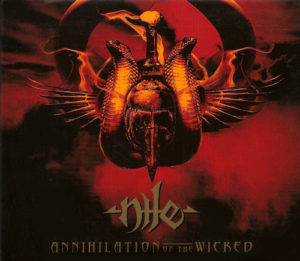
Nile – Annihilation of the Wicked (2005)
On paper, a bunch of white dudes devoting their band to exclusively Egyptian mythology should produce nothing but rolling eyes at best. But Nile refuse to conform to our worst expectations, devoting not just a keen and shockingly deep Ph.D. level of research into the subject matter but also, very importantly, bring the fucking riffs. Annihilation of the Wicked is at once a sharpening and a radical expansion of their sound. The production is sharper, normally a detriment to death metal, but here a benefit given the fine filigree of these songs, being alchemical hybridizations of intense brutality and oodles of prog flourishes and song structures. The group doesn’t wimp out in a cleaner environment, however, instead using that sharpened definition to wider their dynamic capacity so that when they decide to hit you in the mouth, you fucking feel it. – Langdon Hickman
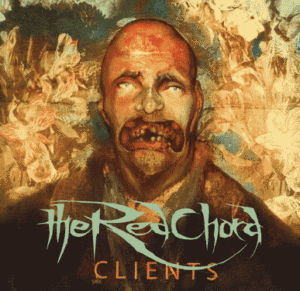
The Red Chord – Clients (2005)
Don’t you call them deathcore. The Red Chord may have gotten lumped in with that scene on their debut, but there’s little of their sound to indicate that making much sense at all. Clients is a frantic combination of grind, technical death metal and oodles of groove to boot. Guitarist Mike “Gunface” McKenzie seems capable of almost anything, from Pig Destroyer-esque deathgrind rippers to techy/jazzy flourishes out of Sleep Terror’s playbook, all wrapped up in an approach to death metal that has no shortage of hooks and, dare I say, a sense of fun. Fed Through the Teeth Machine may have been the record that finally freed The Red Chord from their former ill-fitting designation, but one of its greatest gifts was letting us go back unencumbered by those perceptions to discover gems such as this. – Langdon Hickman
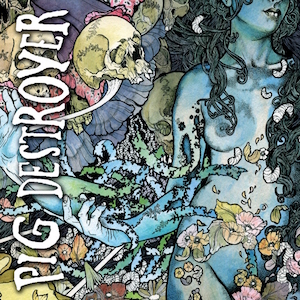
Pig Destroyer – Phantom Limb (2007)
In 2001 Pig Destroyer delivered a record that stands as the very ideal of what grindcore should sound like, Prowler in the Yard, and in the years since the Washington, D.C. rippers have spent their efforts on incorporating more diverse sonic elements into their music: noise rock, thrash metal, and on 2018’s Head Cage, even metalcore. With 2007’s Phantom Limb, they veered ever closer to the ghoulish menace of death metal proper, Scott Hull’s riffs borrowing more liberally from the razor-sharp approach of pioneers Terrorizer and Carcass. Frequently crossing the 90-second barrier, Pig Destroyer carve out a nastier groove and a gnarlier, guttural roar on Phantom Limb, stirring up mosh-pit death metal mayhem on “Loathsome,” dizzying deathgrind overload on “Heathen Temple,” a darkly atmospheric kind of evil on “Girl in the Slayer Jacket,” and some of the most melodic chaos of their career on “The Machete Twins.” There are more proper riffs and grooves here than 30-second killer-bee grindcore assaults, and for that reason alone it stands as one of the band’s greatest moments. – Jeff Terich

Cattle Decapitation – Monolith of Inhumanity (2012)
San Diego’s Cattle Decapitation are veterans of musical violence, starting their fury soaked journey in 1996. Masterpieces, however, often take time, and 2012’s Monolith of Inhumanity was shaped, and informed by a 16-year journey that brought to bear the changing mindsets of death metal in North America within a more traditional framework. Monolith functions like a polemical study of death metal throughout its past couple waves, acknowledging its past while shedding it completely to elevate the genre. The album still preserves its almost reductive brutality as more of a creature comfort, but those core components—towering riffs, concussive channels of both bass and percussion—hit harder than ever before. It’s a testament to laser focused songwriting and uncompromising fidelity. In a lot of ways, Monolith ushered in an entirely new era of production clarity in death metal, where the production was as much an x-factor as the rib cage throttling riffs. – Brian Roesler

Goatwhore – Blood for the Master (2012)
Breaking away even further from the shadow of guitarist Sammy Duet’s former band Acid Bath, with black metal and thrash influence coloring the guitars, New Orleans ghouls Goatwhore’s sixth album has a death metal heart. The riffs are hooky and songs more memorable than much death metal around the turn of the decade, which frequently fell into the trap of too much pummel and not enough songs. Eight years after the fact, Blood for the Master remains a blistering and satisfying listen, with well-composed songs that sacrifice none of the intensity. – Wil Lewellyn
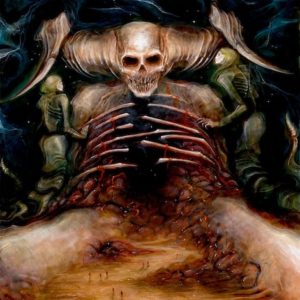
Horrendous – Anareta (2015)
The number of truly eye-popping moments of breathtaking musicality on Horrendous’ third album Anareta feels like an embarrassment of riches, even in a showboating genre space such as death metal. The bridge in “Acolytes” where everything slows down and Matt Knox and Damian Herring’s harmonized guitars float like a mist over everything. The moment in “Ozymandias” where a gutturally chugging old-school death number becomes a transcendent tower of melody. The transition from classical guitar intro to hyperspeed heavy metal sprint in “Sum of All Failures.” It’s no surprise why this album, in particular, was held up as a harbinger of a New Wave of Old-School Death Metal in the U.S., the band’s ear for classic death metal textures and influences providing a solid foundation for more intricate songwriting and well-placed, almost subliminal hooks. In essence what makes Horrendous a great death metal band is what makes them a great heavy metal band overall—indeed, the riffs are killer, but it’s everything else the Philadelphia band builds around them that’s truly stunning. – Jeff Terich

Vastum – Hole Below (2015)
Bay Area outfit Vastum’s lineup is stacked. The band comprises some of modern death metal’s brightest and most charismatic talents. Spearheaded by guitarist/vocalist Leila Abdul-Rauf, bassist Luca Indrio and vocalist Daniel Butler, and bolstered by then drummer Adam Perry (replaced by Chad Gailey) and guitarist Shelby Lermo the full quintet boasts credits with numerous, wildly popular bands in the area (Acephalix, Hammers of Misfortune)—and the skill to back up all of the acclaim. Their 2015 album, Hole Below, followed Vastum’s formula for pounding, mosh-inducing, mid-tempo death metal with a lyrical dash eroticism, perversion, and decay. Songs like “Sodomitic Malevolence” and “Amniosis” epitomized this notion and showcased Vastum’s marked growth in sound from their unsettling second album, Patricidal Lust. – Cody Davis

Necrot – Blood Offerings (2017)
Put on “The Blade” and try to formulate an argument that it is not perfect death metal. Over the years and the diverging approaches to the genre, it sometimes felt as though we lost sight of the unifying central component that makes something suddenly and perfectly death metal. As evidenced by Blood Offerings, Necrot clearly didn’t. Their approach comes not from the technical or progressive wings, not from the realms of hardcore or black metal, but the very center, like Cannibal Corpse reborn. Death metal can do almost anything in the world, which is part of what makes it one of the very best metal subgenres, but at its heart it’s a very simple blood-soaked thing. Necrot’s studious perfection of that innermost flame of the genre feels like an ecstatic celebration of this most brutal and gruesome of heavy metal’s children. – Langdon Hickman
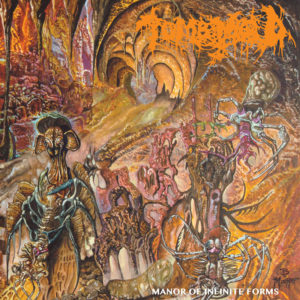
Tomb Mold – Manor of Infinite Forms (2018)
In the annals of North American death metal, Canada has contributed some of the most titanic acts to the canon. Yet Tomb Mold’s Manor of Infinite Forms remains a veritable puzzlebox of death metal glory. Its cosmic expanse brought listeners along its demented journey with pristine production—something that’s become welcomed in critical circles since the late ’80s glory days as being almost a necessity going forward. Every articulation of both roaring guitars, snapping percussion and guttural roars blends into an expedited melange of bold ventures. Soundscapes range from twisted and blistering solos to methodical, almost hypnotic trappings of textured bass rhythms. The instrumentation is the point—it is the message. As the title implies, between its genre trappings are near infinite forms of instrumental style and wrathful grace. A truly sublime work. – Brian Roesler

Creeping Death – Wretched Illusions (2019)
There’s been a bit of an undertow of hardcore-infused death metal cropping up in recent years. One of those bands creating this fusion is Texas’ Creeping Death. The quartet’s been building this sound since 2015, but their full-length debut last year, Wretched Illusions, was a proper introduction to the band’s capabilities. Rhythm-heavy and loaded with riffs, Creeping Death bring swathes of swedeath and an early hardcore edge. “Captivity” encapsulates guitarist Trey Pemberton’s frenzied guitar playing and solos while the following “Bloodlust Contamination” sees Creeping Death unfurl breakdowns and thrash that go toe to toe with fellow Texans Power Trip.- Cody Davis
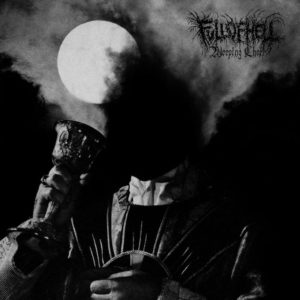
Full of Hell – Weeping Choir (2019)
Descended from the lineage of deathgrind pioneers like L.A.’s Terrorizer and treated to some of the nastiest forms of distortion and noise ever caught on tape, Maryland’s Full of Hell take the idea of extreme metal farther than most. There’s nothing purist in the band’s mangled permutations of death metal and grindcore, if such a thing can even be said to exist, and on 2019’s Weeping Choir it takes on many forms: tremolo-picked destruction on “Burning Myrrh,” nightmarish sludge-death on the six-minute “Army of Obsidian Glass,” even Naked City-style jazzgrind on the manic, saxophone-blaring “Ygramul the Many.” Amid the guttural growls, abrasive riffs and technicality and utter menace that seeps out of every corner of Weeping Choir, there’s a sense of discovery and innovation that suggests new and interesting paths for extreme metal, even as Full of Hell seek to tear down the one that led them there. – Jeff Terich
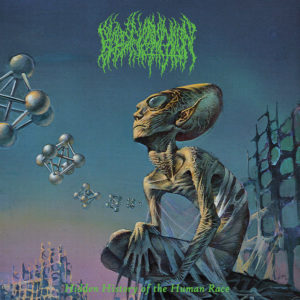
Blood Incantation – Hidden History of the Human Race (2019)
Few modern death metal bands encapsulate the genre’s current fervor quite like Blood Incantation. The Denver-based quartet released Hidden History of the Human Race toward the end of last year after a nearly three-year lull from their previous effort Starspawn. Their newest full-length not only epitomizes the band’s unparalleled grasp on all of death metal’s various stylings, sub-genres, and tenets but likewise confirms their place the at head of modern death metal’s table. Across the album’s roughly half-hour runtime, Blood Incantation effortlessly moves through everything from the tech death-driven “Slave Species to the Gods” to progressive, Rush-inspired
sections on “Inner Paths (To Outer Space).” “The Giza Power Plant” features a funereal death doom segment. There are also touches of brutal death and slam on the album’s pinnacle, “Awakening from the Dream of Existence to the Multidimensional Nature of Our Reality (Mirror of the Soul)”. – Cody Davis
Support our Site—Subscribe to Our Patreon: Become one of our monthly patrons and help support an independent media resource while gaining access to exclusive content, shirts, playlists, mixtapes and more.


Woah there Nelly, including no Incantation albums whatsoever is a bold move. Onward to Golgotha, Mortal Throne of Nazarene, Diabolical Conquest, or hell, any of their current renaissance since Vanquish in Vengeance would be worthy of inclusion (also appreciating you’re not going to be able to include everything that should be, but still. Incantation. INCANTATION.) They’ve had as much of an influence on modern death metal as any of the old guard, IMO.
I agree. It’s unbelievable and in my opinion just plain wrong.
No Suffocation? Mike Smith, THE inventor of the blast beat… Def. needs a reputation in here…
No Vital Remains? ahhhh…
Cheers
Suffocation is on the list
is Pierced From Within not a Suffocation album?
I’m surprised Heartwork by Carcass isn’t on here.
Carcass are from the UK
Love these lists! Haven’t heard much of the more recent stuff here and some of the old. Looks like I’ve got some listening to do this week.
First poster, thank you for recommending Incantation. I’d never heard of them. Sounds great.
Well… no Incantation, no Monstrosity, no Impetigo…
The first half of the list is really good, except for the omission of Incantation which is a massive irreconcilable flaw. There are legions of Incantation clones out there playing that dank doomy “cavernous death metal” which Incantation spawned. The first 3 Incantation albums are as important as pretty much anything on the list and their entire discography is better than several albums on the list. Unfortunately without Incantation on there, the list just doesn’t match the mission statement.
Failing to include Incantation’s Onward to Golgotha is a serious oversight. The effortless, lurching time changes from hyperspeed death to near doom metal riffing, the inhuman vocals and the strong anti-Christian sentiment of the lyrics were hugely influential. Onward is one of the most brutal albums from the 2nd generation death metal bands and deserves it’s place amogst the best and most influential death metal albums of all time. Do better.